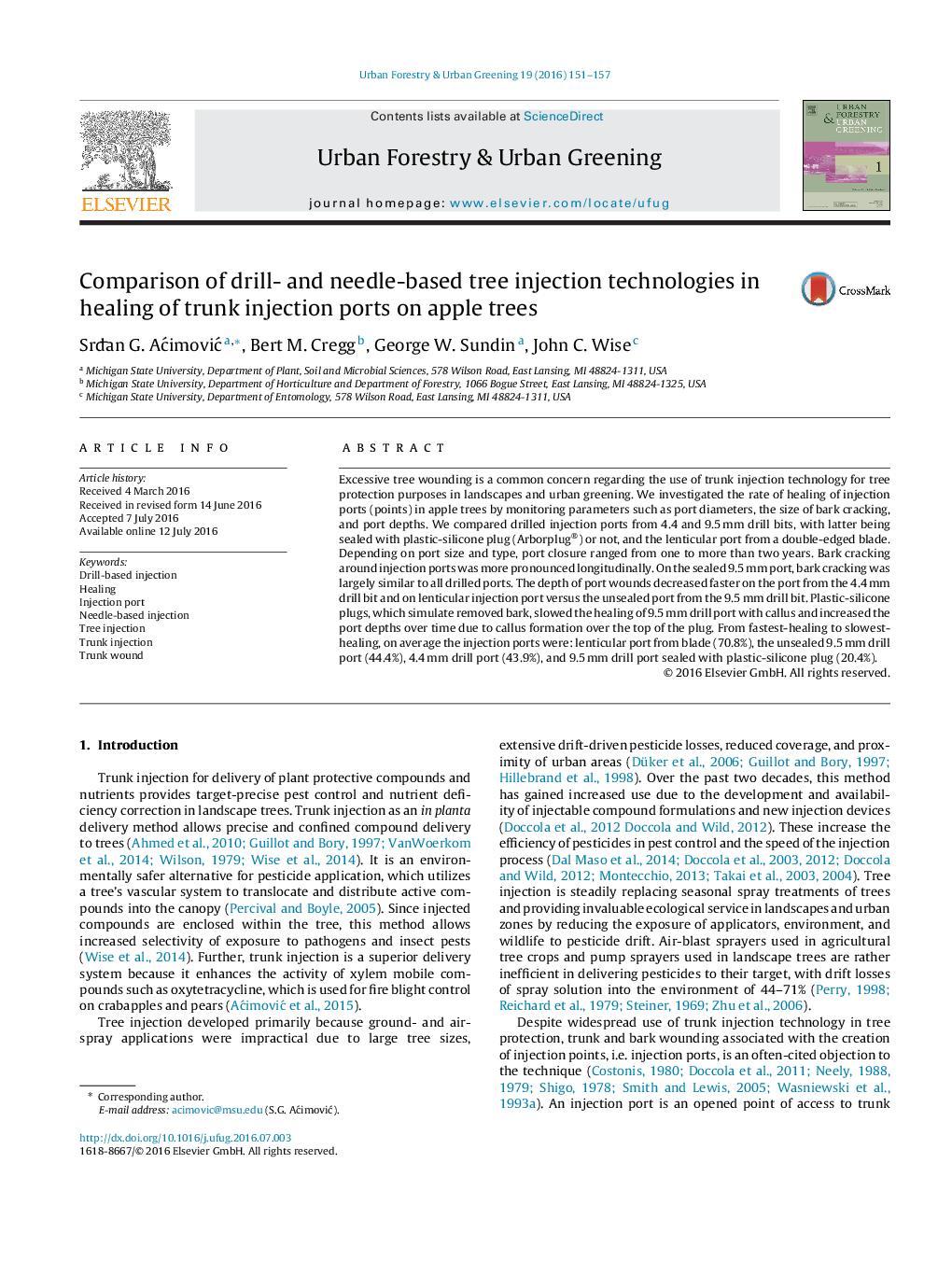| Article ID | Journal | Published Year | Pages | File Type |
|---|---|---|---|---|
| 93925 | Urban Forestry & Urban Greening | 2016 | 7 Pages |
Abstract
Excessive tree wounding is a common concern regarding the use of trunk injection technology for tree protection purposes in landscapes and urban greening. We investigated the rate of healing of injection ports (points) in apple trees by monitoring parameters such as port diameters, the size of bark cracking, and port depths. We compared drilled injection ports from 4.4 and 9.5Â mm drill bits, with latter being sealed with plastic-silicone plug (Arborplug®) or not, and the lenticular port from a double-edged blade. Depending on port size and type, port closure ranged from one to more than two years. Bark cracking around injection ports was more pronounced longitudinally. On the sealed 9.5Â mm port, bark cracking was largely similar to all drilled ports. The depth of port wounds decreased faster on the port from the 4.4Â mm drill bit and on lenticular injection port versus the unsealed port from the 9.5Â mm drill bit. Plastic-silicone plugs, which simulate removed bark, slowed the healing of 9.5Â mm drill port with callus and increased the port depths over time due to callus formation over the top of the plug. From fastest-healing to slowest-healing, on average the injection ports were: lenticular port from blade (70.8%), the unsealed 9.5Â mm drill port (44.4%), 4.4Â mm drill port (43.9%), and 9.5Â mm drill port sealed with plastic-silicone plug (20.4%).
Keywords
Related Topics
Life Sciences
Agricultural and Biological Sciences
Forestry
Authors
SrÄan G. AÄimoviÄ, Bert M. Cregg, George W. Sundin, John C. Wise,
